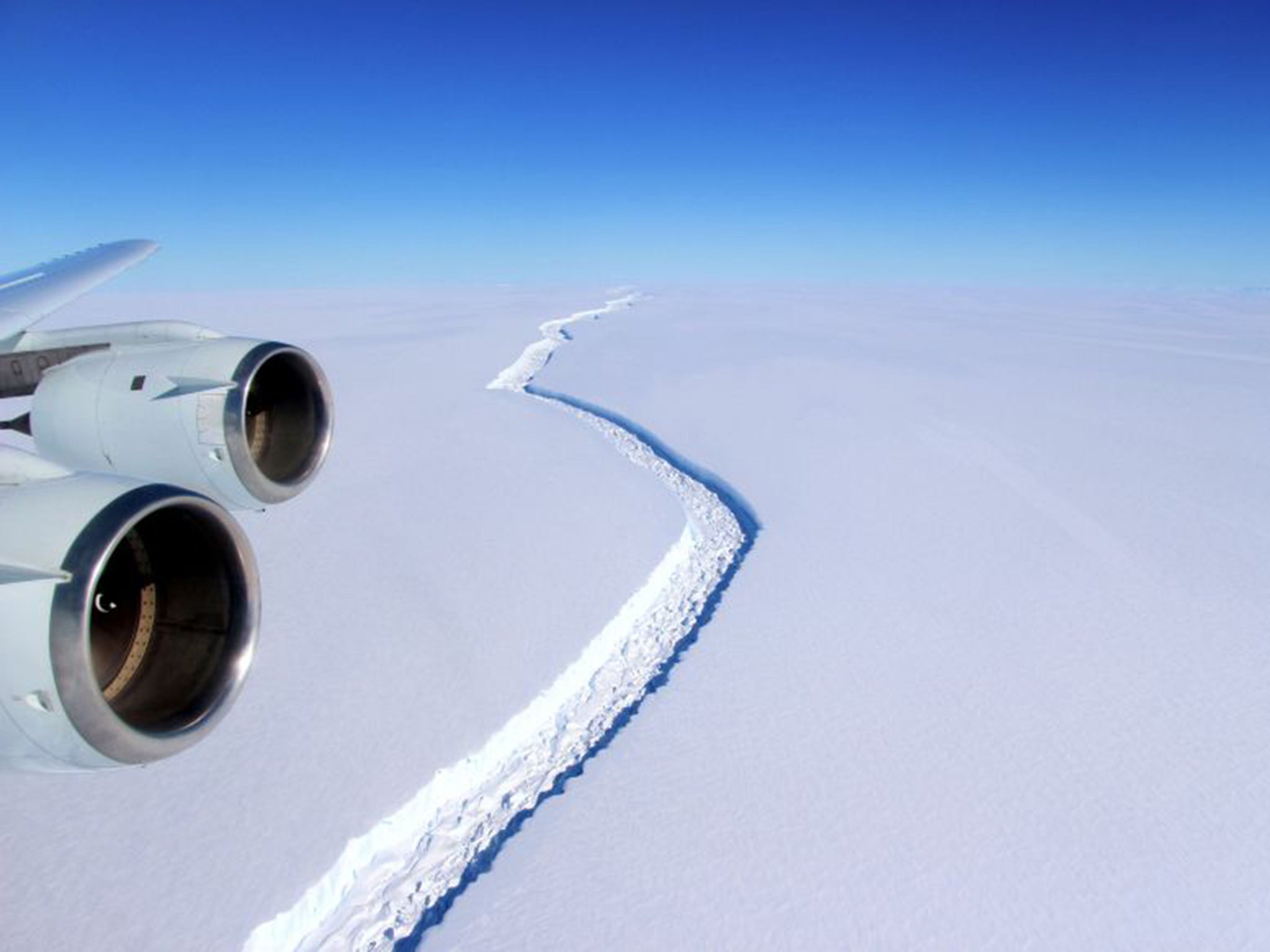Antarctic sends message to Donald Trump about global warming in shape of iceberg the size of Delaware
Giant crack in ice shelf grew by 11 miles in just one week

Your support helps us to tell the story
From reproductive rights to climate change to Big Tech, The Independent is on the ground when the story is developing. Whether it's investigating the financials of Elon Musk's pro-Trump PAC or producing our latest documentary, 'The A Word', which shines a light on the American women fighting for reproductive rights, we know how important it is to parse out the facts from the messaging.
At such a critical moment in US history, we need reporters on the ground. Your donation allows us to keep sending journalists to speak to both sides of the story.
The Independent is trusted by Americans across the entire political spectrum. And unlike many other quality news outlets, we choose not to lock Americans out of our reporting and analysis with paywalls. We believe quality journalism should be available to everyone, paid for by those who can afford it.
Your support makes all the difference.A long-growing crack in the Larsen C ice shelf, one of Antarctica’s largest floating platforms of ice, appears to be nearing its endgame.
Researchers with Project MIDAS, working out of Swansea University and Aberystwyth University in Wales and studying the shelf by satellites and through other techniques, have released a new update showing that the crack grew a stunning 11 miles in the space of just one week between May 25 and May 31.
It now has just 8 miles to go before an iceberg roughly the size of Delaware breaks free into the Southern Ocean.
“There appears to be very little to prevent the iceberg from breaking away completely,” the researchers write.
Elsewhere in their post, they note that the crack has now curved towards the front of the ice shelf and the ocean, meaning that the time when a major break could occur “is probably very close.”
The researchers have estimated that the section of ice set to break off could be around 2,000 square miles in area. The US state of Delaware isn’t much larger than that.
“When it calves, the Larsen C Ice Shelf will lose more than 10 per cent of its area to leave the ice front at its most retreated position ever recorded; this event will fundamentally change the landscape of the Antarctic Peninsula,” write the Project MIDAS team.
“We have previously shown that the new configuration will be less stable than it was prior to the rift, and that Larsen C may eventually follow the example of its neighbour Larsen B, which disintegrated in 2002 following a similar rift-induced calving event.”
The prospect of an enormous iceberg afloat in the seas around Antarctica could draw further attention to the threat of climate change at a time when President Trump is considering whether to exit the Paris agreement to reduce greenhouse gas emissions.
An ice shelf is the floating extension of a glacier that itself grows from the land out into the ocean. The loss of a large iceberg from Larsen C would not raise the sea level, since the ice is already afloat.
However, the thinning and loss of ice shelves leads glaciers to flow more rapidly into the sea, and as ice is transferred from atop the land into the water, sea levels will rise somewhat.
Join our commenting forum
Join thought-provoking conversations, follow other Independent readers and see their replies
Comments